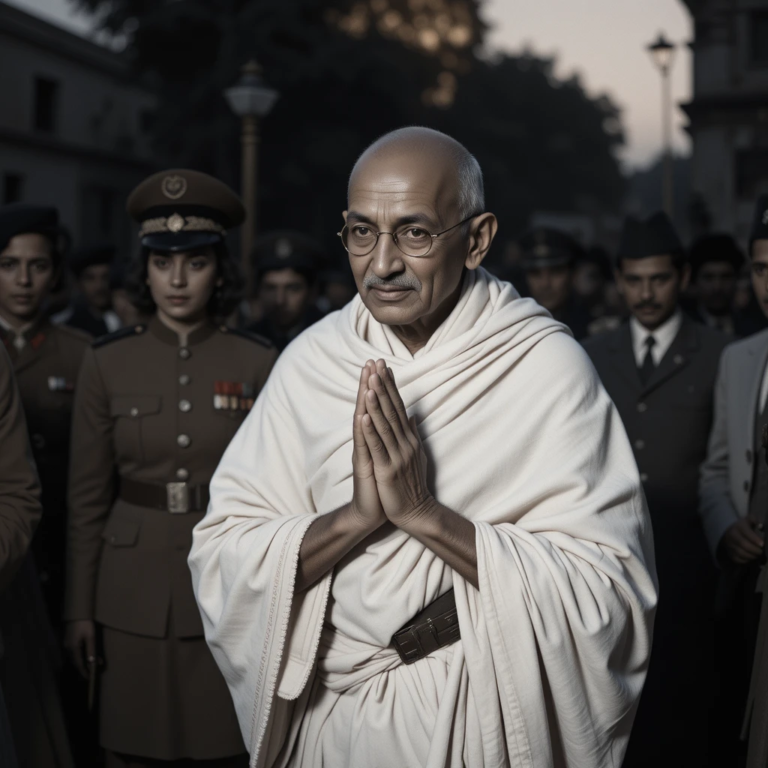Criminology and Penology are two interrelated branches of the criminal justice field, which focus on the study of crime, criminals, and the various forms of punishment and rehabilitation. These fields play a crucial role in understanding crime in society and formulating policies to prevent it. Below is a detailed overview of both criminology and penology, their historical backgrounds, significance, and roles in society, which will address their importance in law enforcement and justice.
Table of Contents
Criminology: An Introduction

Criminology is the scientific study of crime, criminal behavior, and the criminal justice system. It aims to understand the causes and consequences of crime, identify patterns, and propose solutions to prevent it. Criminologists are experts who study crime from various perspectives, including sociological, psychological, and biological, to offer insights into the underlying factors that lead to criminal activity.
Historical Background of Criminology
The origins of criminology can be traced back to the Classical School of criminology, which emerged in the 18th century. Philosophers like Cesare Beccaria and Jeremy Bentham advocated for rational thought in criminal justice systems, emphasizing punishment as a deterrent for criminal behavior.
- Cesare Beccaria: In his work On Crimes and Punishments (1764), Beccaria argued for reforms in the criminal justice system. He emphasized that punishment should be proportional to the crime, public, and prompt to serve as a deterrent. Beccaria also introduced the idea of “due process” and the importance of evidence in trials.
- Jeremy Bentham: Bentham’s principle of utilitarianism, which focused on maximizing happiness, influenced criminal justice policies. He proposed the concept of the “Panopticon,” a prison design aimed at efficient surveillance, symbolizing a modern approach to punishment and rehabilitation.

The early 19th century saw the rise of the Positive School, with scholars like Cesare Lombroso proposing that criminal behavior was biologically determined. Lombroso’s theory of the “born criminal” was a controversial yet influential idea, which set the foundation for later sociological theories.
In the 20th century, the Chicago School of criminology emerged, which focused on the environmental and social factors that contribute to criminal behavior. Sociologists like Robert Park and Ernest Burgess studied the impact of urbanization, poverty, and social disorganization on crime rates.
The Role of Criminology in Society
Criminology serves several key functions in society:
- Understanding Crime: By studying crime patterns, criminologists help identify causes and risk factors for criminal behavior, such as poverty, family background, substance abuse, and social inequality.
- Criminal Profiling: Criminologists help law enforcement agencies identify characteristics of criminals based on behavioral patterns. This aids in criminal investigations and can lead to more effective policing strategies.
- Policy Making: Criminologists often work with lawmakers to develop policies aimed at reducing crime. Their research is crucial in shaping laws that focus on prevention, deterrence, rehabilitation, and punishment.
- Prevention and Rehabilitation: By analyzing the effectiveness of various criminal justice practices, criminologists contribute to developing rehabilitation programs that focus on addressing the root causes of crime, such as mental health issues and substance abuse.
- Public Awareness: Criminology helps educate the public about crime, its causes, and how to protect themselves from becoming victims of crime. This promotes safer communities and a better understanding of criminal justice issues.

Importance of Criminology in Law
Criminology is essential in law for several reasons:
- Crime Prevention: It enables the identification of factors that contribute to crime, allowing for the creation of targeted policies to prevent criminal behavior.
- Reform of Criminal Justice Systems: Criminological theories help reform existing justice systems to ensure fairness, justice, and effectiveness in dealing with crime and offenders.
- Building Legal Frameworks: Criminologists play an important role in crafting laws related to crime, including statutes that deal with punishment, rehabilitation, and the rights of victims and offenders.

Penology: An Introduction
Penology is the study of punishment, prison systems, and the treatment of offenders. It focuses on understanding how punishment influences criminal behavior and how the criminal justice system can effectively manage offenders. While criminology deals with the study of crime, penology is concerned with the means used to address crime after it has been committed.

Historical Background of Penology
Penology also has its roots in the Classical School, with early thinkers like Beccaria advocating for reforms in the penal system. The focus of penal systems historically was largely on retribution, with little consideration for the rehabilitation of offenders.
However, the Reformatory Movement in the 19th century introduced the idea that prisoners could be rehabilitated rather than simply punished. This shift in perspective was influenced by a growing belief in the potential for human improvement and the development of psychological and social sciences.

The Prison Reform Movement in Europe and North America during the 19th and early 20th centuries sought to improve the conditions of prisons and emphasize the rehabilitation of offenders. Notable figures like John Howard and Elizabeth Fry campaigned for reforms to improve prison conditions, emphasizing the need for hygiene, education, and vocational training for inmates.
In the mid-20th century, rehabilitative penology gained prominence. The focus shifted from punitive measures to rehabilitative practices that aimed to address the underlying causes of criminal behavior, such as mental health issues and substance abuse.
The Role of Penology in Society

Penology plays a critical role in ensuring the fair and just treatment of offenders, while also contributing to crime reduction. Its functions include:
- Punishment: Penology examines the various forms of punishment (e.g., imprisonment, fines, community service) and determines their effectiveness in deterring crime. It also considers ethical issues related to punishment, such as the prohibition of torture and inhumane treatment.
- Rehabilitation: One of the key goals of penology is rehabilitation. This involves providing prisoners with the tools they need to reintegrate into society and reduce recidivism. Penologists study programs designed to treat mental health, substance abuse, and educational needs.
- Restorative Justice: Penology has been instrumental in the development of restorative justice practices, which focus on repairing the harm caused by crime rather than solely punishing the offender. Restorative justice involves victims, offenders, and the community in the justice process to foster healing and accountability.
- Prison Management: Penologists analyze the structure and functioning of prison systems to improve the effectiveness of incarceration. This includes studying prison overcrowding, inmate behavior, and the ethical treatment of prisoners.
- Deterrence: Penology also addresses the deterrence aspect of punishment—how certain penalties might discourage future criminal behavior. By understanding the psychology of punishment, penologists contribute to developing sentencing guidelines that are just and effective.

Importance of Penology in Law
Penology plays an essential role in law by ensuring that criminal justice systems are fair, humane, and effective in dealing with offenders. Its importance includes:
- Ensuring Justice: Penology ensures that criminal justice practices are just and proportional to the offense committed. This helps to prevent excessive punishment and to safeguard human rights.
- Rehabilitation and Reintegration: Penology’s focus on rehabilitation helps ensure that offenders are given a chance to reform and reintegrate into society, reducing the chances of repeat offenses.
- Human Rights: Penologists advocate for the fair treatment of prisoners, ensuring that their human rights are upheld and that they are not subjected to inhumane or degrading punishment.
- Reducing Recidivism: Through rehabilitation programs, penology aims to reduce recidivism by addressing the root causes of criminal behavior and offering offenders a chance at reform.
- Reform of Prisons: Penology plays a key role in prison reform, which is essential in improving the conditions and operations of prisons to ensure they are effective in their goals of punishment and rehabilitation.
Conclusion: The Interplay of Criminology and Penology
Criminology and penology are two crucial fields within the criminal justice system that complement each other in the effort to create a safer society. Criminology provides a foundation for understanding crime, its causes, and its effects on individuals and communities, while penology focuses on the methods of punishment, rehabilitation, and reforming offenders.
By examining both crime and punishment, criminology and penology provide insights that help shape fair, humane, and effective criminal justice systems. They both contribute to the evolution of laws and policies designed to prevent crime, punish offenders, rehabilitate criminals, and ultimately ensure a safer, more just society.
References for Criminology:
- Beccaria, C. (1764).On Crimes and Punishments. Translated by David Young. The University of Chicago Press.
- Cesare Beccaria’s classic work is foundational in the development of modern criminology, arguing for a rational and proportional approach to crime and punishment.
- Bentham, J. (1789).An Introduction to the Principles of Morals and Legislation. The University of London Press.
- Jeremy Bentham’s ideas of utilitarianism influenced many aspects of criminal justice and are fundamental to the study of criminology.
- Lombroso, C. (1876).Criminal Man. Translated by H. P. Hughs. The Macmillan Company.
- Cesare Lombroso’s controversial theory of the “born criminal” laid the foundation for later criminological theories that link biology and behavior.
- Park, R. E., & Burgess, E. W. (1925).The City: Suggestions for the Investigation of Human Behavior in the Urban Environment. University of Chicago Press.
- The Chicago School’s sociological perspective on crime emphasized the role of urban environments in shaping criminal behavior.
- Merton, R. K. (1938).Social Structure and Anomie. American Sociological Review, 3(5), 672-682.
- Robert Merton’s theory of anomie provided a key framework for understanding the relationship between societal expectations and deviant behavior.
- Siegel, L. J. (2016).Criminology: Theories, Patterns, and Typologies (12th ed.). Cengage Learning.
- This textbook provides a comprehensive overview of criminological theories, including sociological, psychological, and biological approaches.
- Hirschi, T. (1969).Causes of Delinquency. University of California Press.
- Hirschi’s work on social control theory emphasizes the importance of societal bonds in preventing criminal behavior.
References for Penology:
- Howard, J. (1777).The State of the Prisons in England and Wales. Printed by J. Johnson.
- John Howard’s report on prison conditions in England was groundbreaking in advocating for prison reform and better treatment of prisoners.
- Fry, E. (1818).The Penal System: A Plan for the Betterment of Prisons. Macmillan.
- Elizabeth Fry’s advocacy for the improvement of prison conditions, particularly for female prisoners, was a major contribution to penology and prison reform.
- Durkheim, E. (1893).The Division of Labor in Society. Free Press.
- Émile Durkheim’s theories on social solidarity and its relation to punishment remain influential in penological studies.
- Robinson, P. (2008).Punishment and Crime: Theories and Practices of Criminal Justice. Sage Publications.
- Robinson’s work discusses various theories of punishment, the concept of retribution, and rehabilitation in modern criminal justice systems.
- Cullen, F. T., & Jonson, C. L. (2017).Correctional Theory: Context and Consequences (2nd ed.). Sage Publications.
- This book delves into correctional theories, the effectiveness of various penal measures, and how society views offenders.
- Clear, T. R., & Frost, N. A. (2015).The Punishment Imperative: The Rise and Failure of Mass Incarceration in America. New York University Press.
- This book critically examines mass incarceration in America and its failure to achieve justice or rehabilitation.
- Zehr, H. (2002).The Little Book of Restorative Justice. Good Books.
- Howard Zehr’s seminal work on restorative justice, emphasizing rehabilitation over punitive measures, is a key component of modern penology.
- Pratt, J. (2002).Punishment and Civilization: Penal Tolerance and Intolerance in Modern Society. Sage Publications.
- Pratt explores the evolution of punishment practices in the Western world, examining the shift from corporal punishment to more rehabilitative approaches.
- Miller, W. R., & Rollnick, S. (2012).Motivational Interviewing: Helping People Change (3rd ed.). The Guilford Press.
- This book focuses on motivational interviewing, a technique used in rehabilitation programs within penal systems to help offenders change behavior.
- Walters, G. D. (2011).Crime and Crime Control: An Introduction to Criminology. Wadsworth Publishing.
- Walters discusses the broader applications of criminological theory, including how various criminological and penological approaches impact the treatment of offenders.
Additional Scholarly Articles and Journals:
- Gottfredson, M. R., & Hirschi, T. (1990).A General Theory of Crime. Stanford University Press.
- A widely cited work on self-control theory that ties criminal behavior to individual psychological factors, impacting both criminology and penology.
- Becker, H. S. (1963).Outsiders: Studies in the Sociology of Deviance. Free Press.
- Howard Becker’s work on labeling theory is important for understanding how society views crime and punishment, which informs both criminological research and penal practices.
- Paternoster, R., & Simpson, S. S. (1996).Sanction Threats and Appeals to Morality: Testing a Rational Choice Model of Corporate Crime. Law & Society Review, 30(3), 549-573.
- This study integrates criminological and penological theory to explain corporate crime and how punishments influence behavior.




